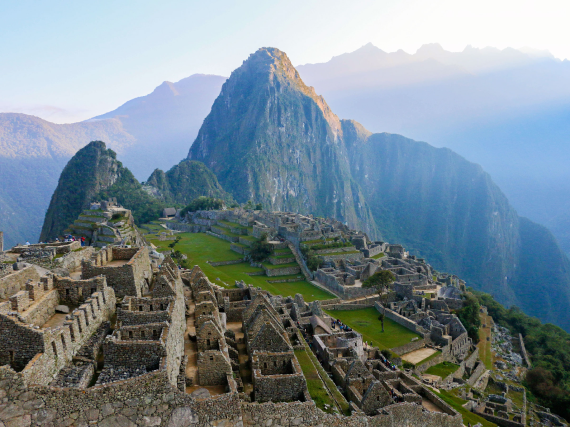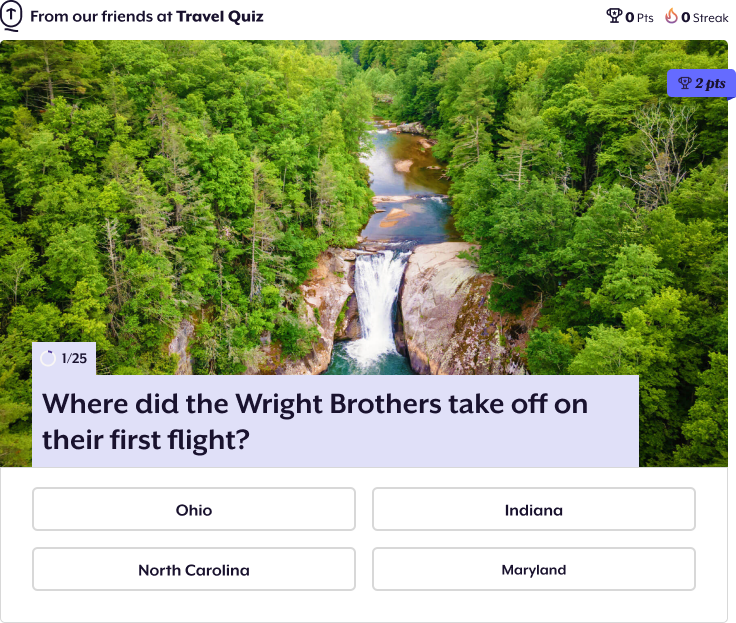From the vibrant streets of San Juan, Puerto Rico, to the stunning beaches of the U.S. Virgin Islands, there are many islands scattered across the United States, the Caribbean, and the Pacific that Americans can reach without the need for a passport. Whether you’re attracted to sugar-sand beaches, rich history, or marine biodiversity, these six tropical U.S. islands are sure to delight.
Kauai – Hawaii

With an estimated geological age of 5.1 million years, Kauai is the oldest of the Hawaiian islands. Nicknamed the “Garden Isle” for its lush landscapes, Kauai — like the other Hawaiian islands — was created by a volcanic eruption. Anthropologists believe that the first Polynesians arrived on the island in about 500 CE. Centuries later, Captain Cook became the first Westerner to land on Kauai’s shores in 1778.
On the rugged western side of Kauai, you’ll find one of the island’s true highlights: Waimea Canyon, which has been dubbed the “Grand Canyon of the Pacific.” At 14 miles long, a mile wide, and over 3,500 feet deep, Waimea is a bit smaller than the actual Grand Canyon, but much more lush. Unlike most canyons, which are formed by rivers, Waimea came into existence when a portion of the volcanic island collapsed about 4 million years ago. The resulting depression filled with lava flows, which over time were eroded by Kauai’s abundant rainfall.
Another can’t-miss stretch of Kauai is the 17-mile-long Napali Coast. Even if it looks familiar (film franchises such as Pirates of the Caribbean and Jurassic Park have filmed here), there’s still a not-of-this-world look to these sacred razor-ridged cliffs. Their emerald slopes — some cascade-streaked — plunge dramatically into the Pacific, the occasional beach, sea cave, or valley hidden in their impossibly lush folds.
Puerto Rico
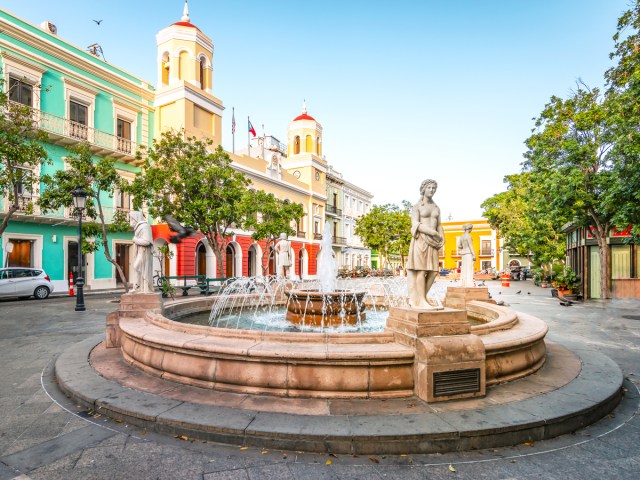
As one of the most popular and accessible tropical islands for U.S.-based travelers, Puerto Rico welcomed 6.6 million visitors by air in 2024, its fourth consecutive year of record-breaking tourism growth.
Puerto Rico’s appeal extends far beyond the easy entry requirements — it’s clear from the moment you approach Luis Muñoz Marín International Airport, where views of fringing reefs and lush jungle welcome visitors from the sky. Once on the ground, San Juan enchants with its vibrant energy, colorful streets, colonial architecture, and fascinating historic sites.
Stroll through the charming cobblestone streets of Old San Juan, then dive into the history of the Old City Walls and the impressive ramparts of Castillo San Cristóba — both UNESCO World Heritage Sites — before venturing beyond the city to immerse yourself in the island’s stunning natural beauty.
El Yunque National Forest — the only tropical rainforest in the U.S. national forest system — offers lush trails, waterfalls, and diverse wildlife, while the magical island of Vieques enchants with its bioluminescent bay and pristine beaches. To the west lies Rincon, a laid-back surfers’ paradise with seemingly endless shorelines waiting to be discovered.
U.S. Virgin Islands

The U.S. Virgin Islands, located just off Puerto Rico’s southeastern tip, are an archipelago of three main islands — St. John, St. Croix, and St. Thomas — and numerous smaller cays.
Known for their white-sand beaches, world-class snorkeling, and scuba diving, the islands provide a relaxing tropical escape without the hassle of customs and immigration. Iconic shorelines such as Trunk Bay, Magens Bay, and Cane Bay Beach boast lush palms lining one side and the pristine turquoise waters of the Caribbean on the other.
As a popular cruise destination, the islands offer a variety of shopping experiences, from St. Thomas’ colonial alleyways and St. John’s upscale promenades to the vibrant craft markets in St. Croix. Visitors can explore the warm tropical waters through kayaking, paddleboarding, or snorkeling tours, but diving is especially popular around St. Croix thanks to its sunken shipwrecks and vibrant reefs.
Key West – Florida

Key West is the southernmost point in the continental U.S., located closer to Cuba (about 90 miles) than the U.S. mainland. It’s possible to reach the island not only without a passport but also without stepping foot on a plane. Florida’s Overseas Highway extends for 113 miles to Key West, with 42 bridges that span the open waters of the Atlantic Ocean, Florida Bay, and the Gulf of Mexico.
Key West is known for its lively bars and restaurants as well as its excellent snorkeling opportunities — it’s home to the Florida Reef System, the largest (and only) coral reef system in the contiguous U.S., stretching all the way north to Martin County. The reef system boasts an array of sea creatures, including sea turtles, stingrays, parrotfish, and different coral species.
Key West also has a rich literary history: Ernest Hemingway and his wife bought a home in Key West, Florida, in 1931 and lived there until 1940. Today the house is a public museum dedicated to the iconic American author, who also happened to be a cat lover. As evidence, approximately 40 to 50 cats still live on the premises, many of whom are descendants of the ones Hemingway owned when he lived there.
And located 70 miles west of Key West is Dry Tortugas National Park. Accessible only by boat or seaplane, it is one of the country’s least-visited national parks. Those who do make the trek will find plenty of water activities, including searching for the park’s namesake turtles, but perhaps the star attraction of Dry Tortugas is Fort Jefferson. It is the largest brick structure in the Western Hemisphere, made of some 16 million bricks.
Tutuila – American Samoa
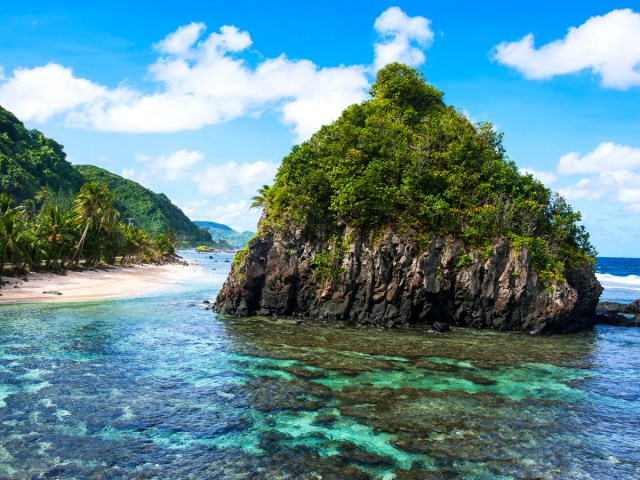
Did you know you can explore the South Pacific islands without leaving U.S. soil? American Samoa, an unincorporated U.S. territory, offers a unique blend of tropical beauty and historical significance. The U.S. acquired the five volcanic islands and two coral atolls of American Samoa in 1899 through the Treaty of Berlin, which also resulted in Germany acquiring German Samoa (now the independent nation of Samoa).
The largest island in American Samoa, Tutuila, spans approximately 52 square miles. Renowned for its pristine beaches and vibrant coral reefs, the island also boasts significant World War II relics, attracting history enthusiasts and beach lovers alike.
Pago Pago, the capital of Tutuila, serves as the gateway to the island’s main attractions. A 1.7-mile round-trip hike around the harbor leads past two sets of World War II gun emplacements at Blunts Point and Breakers Point and the National Park of American Samoa. Located a few miles north of the capital, it offers beautiful hikes, beaches, and viewpoints — and it’s the only U.S. national park located south of the equator.
Guam
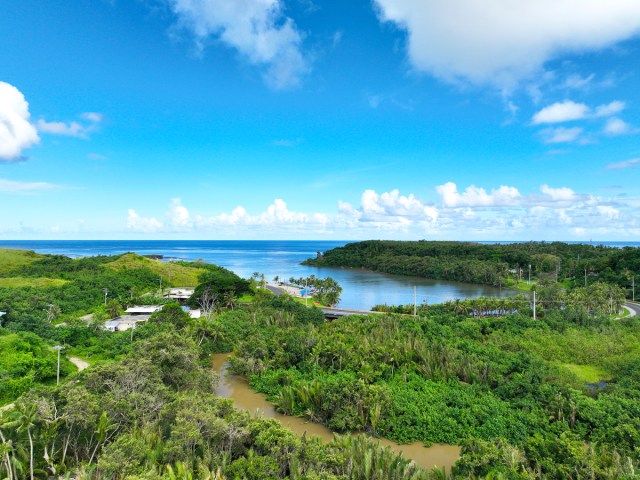
Part of the Northern Mariana Islands but designated its own U.S. territory, Guam, like American Samoa, is known for its rich culture, tropical climate, beautiful beaches, and an abundance of World War II history. The U.S. Navy and Air Force have maintained a presence on Guam since 1944, and it remains an important American military base in Micronesia due to its strategic location near China, Japan, and the Philippines.
A walk along Tumon Beach reveals several WWII-era Japanese defense pillboxes, while a drive up to the Asan Bay Overlook offers breathtaking views of Invasion Beach, site of some of Guam’s most significant historical battles. Other historical highlights include Piti Guns Unit, Asan Beach, and the Liberator’s Memorial. Beyond its history, Guam offers the Guam National Wildlife Refuge, with pristine beaches, abundant wildlife encounters, scenic hikes, and a variety of cultural activities.
More from our network
Daily Passport is part of Optimism, which publishes content that uplifts, informs, and inspires.

